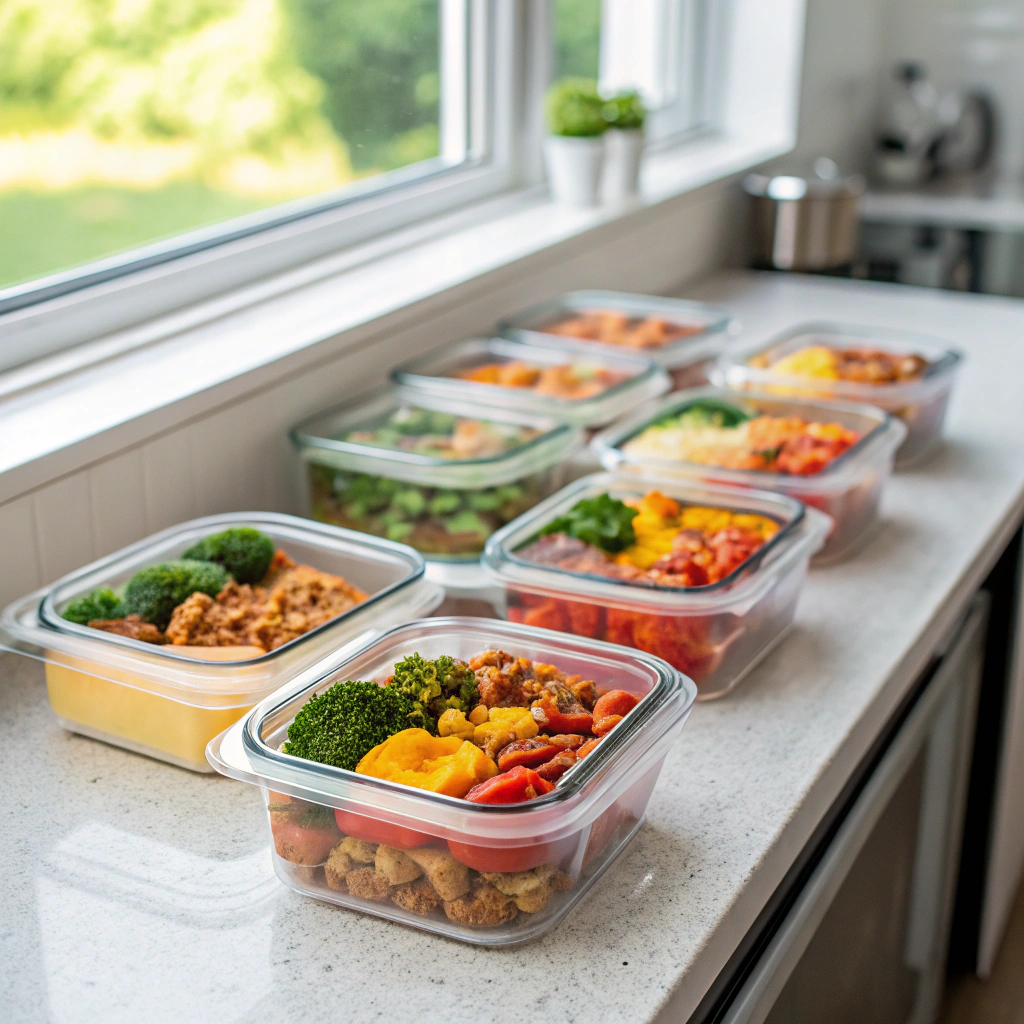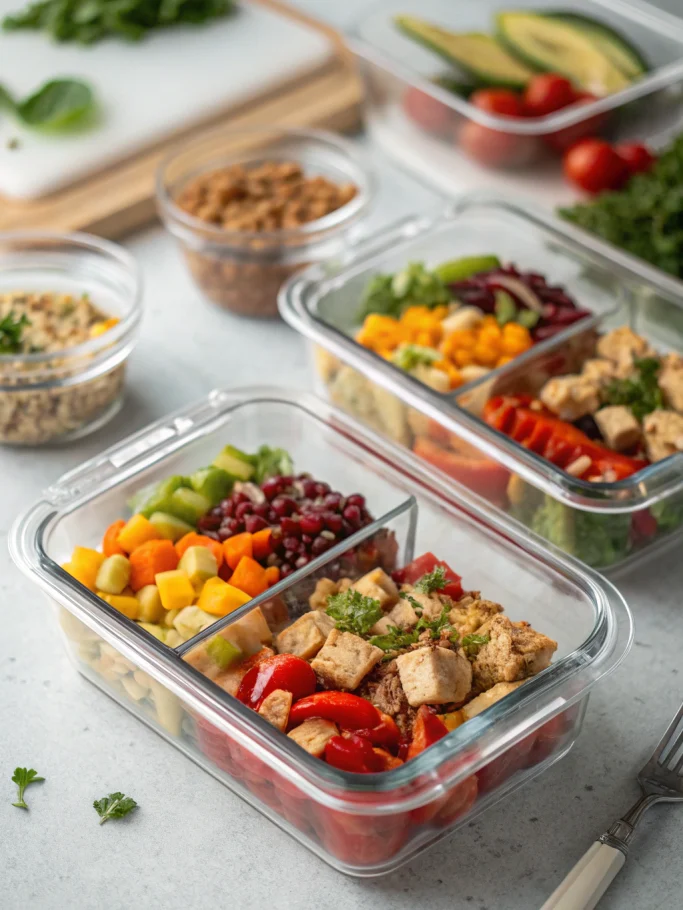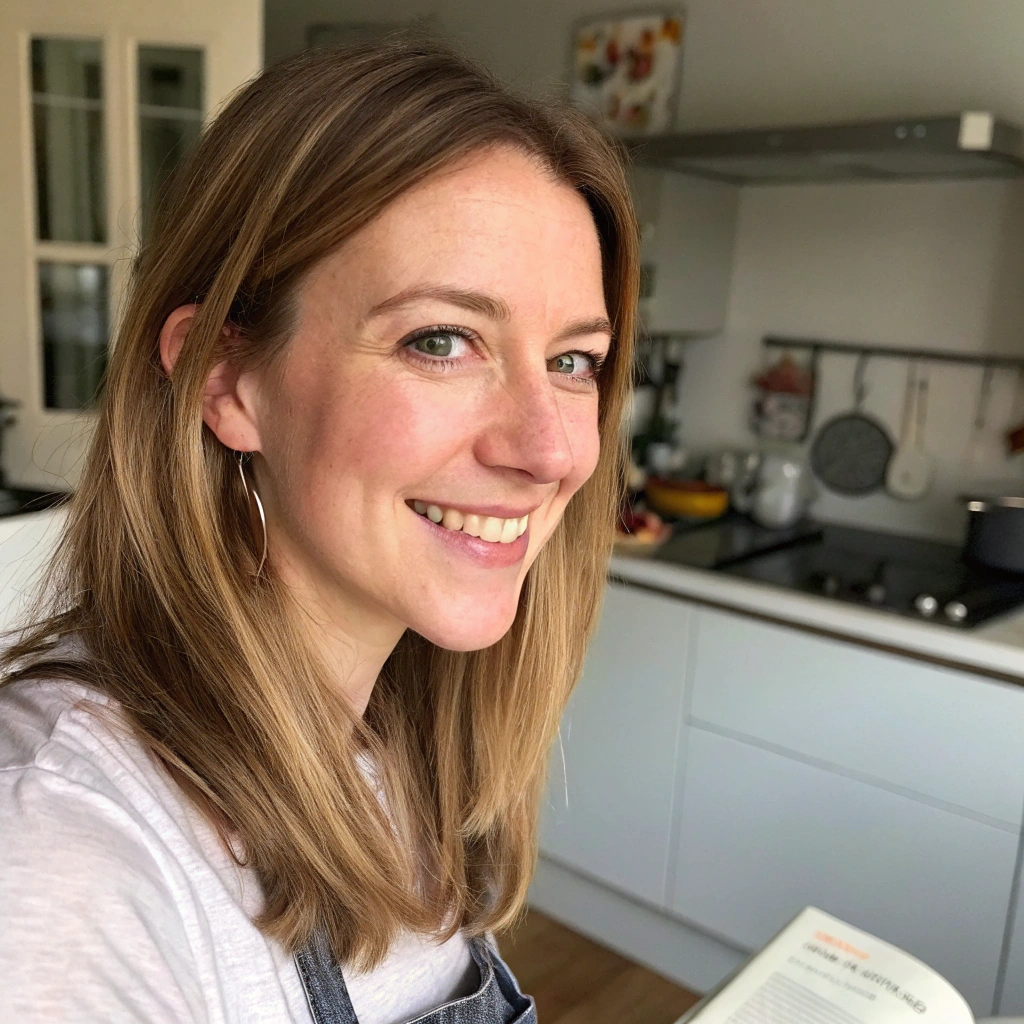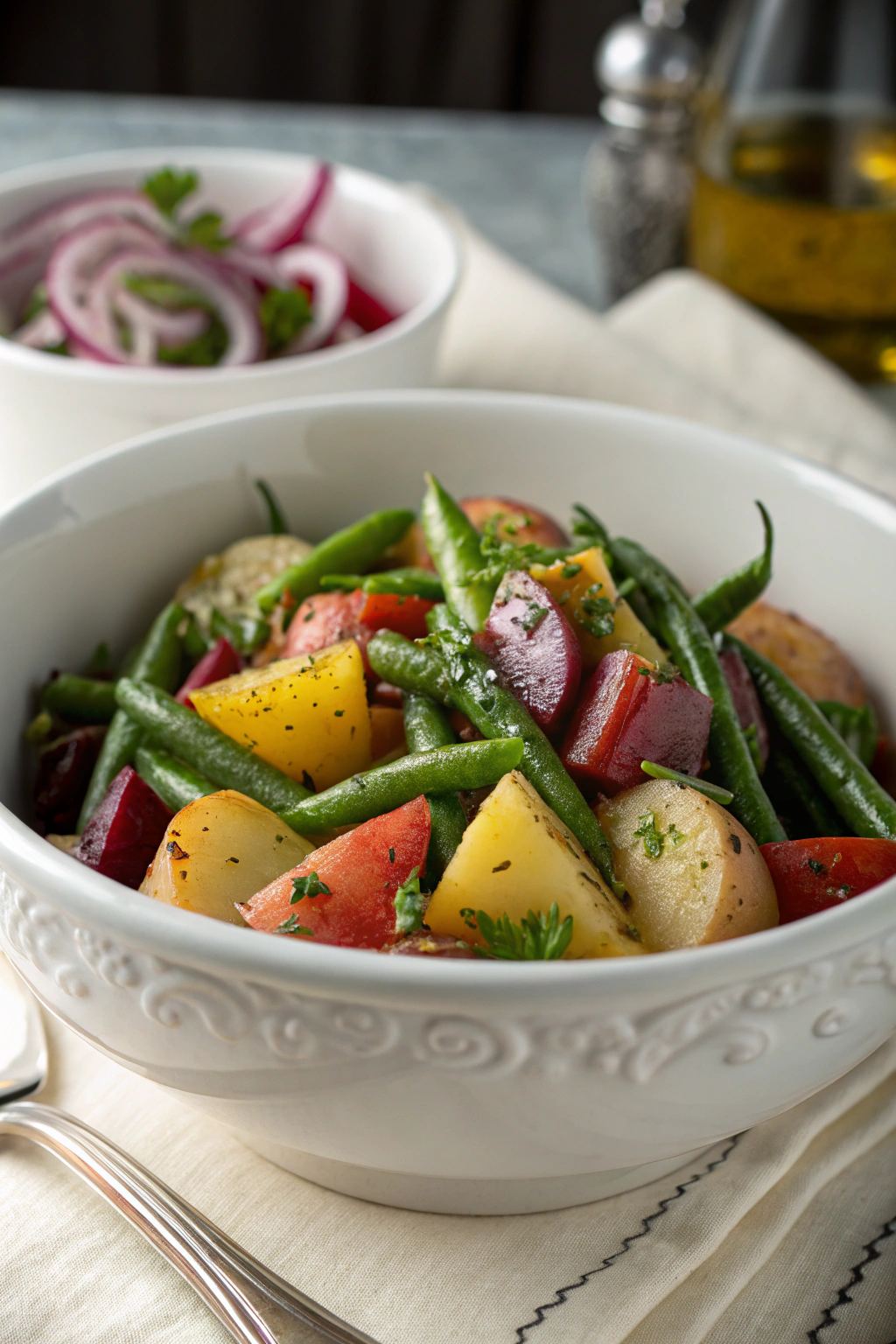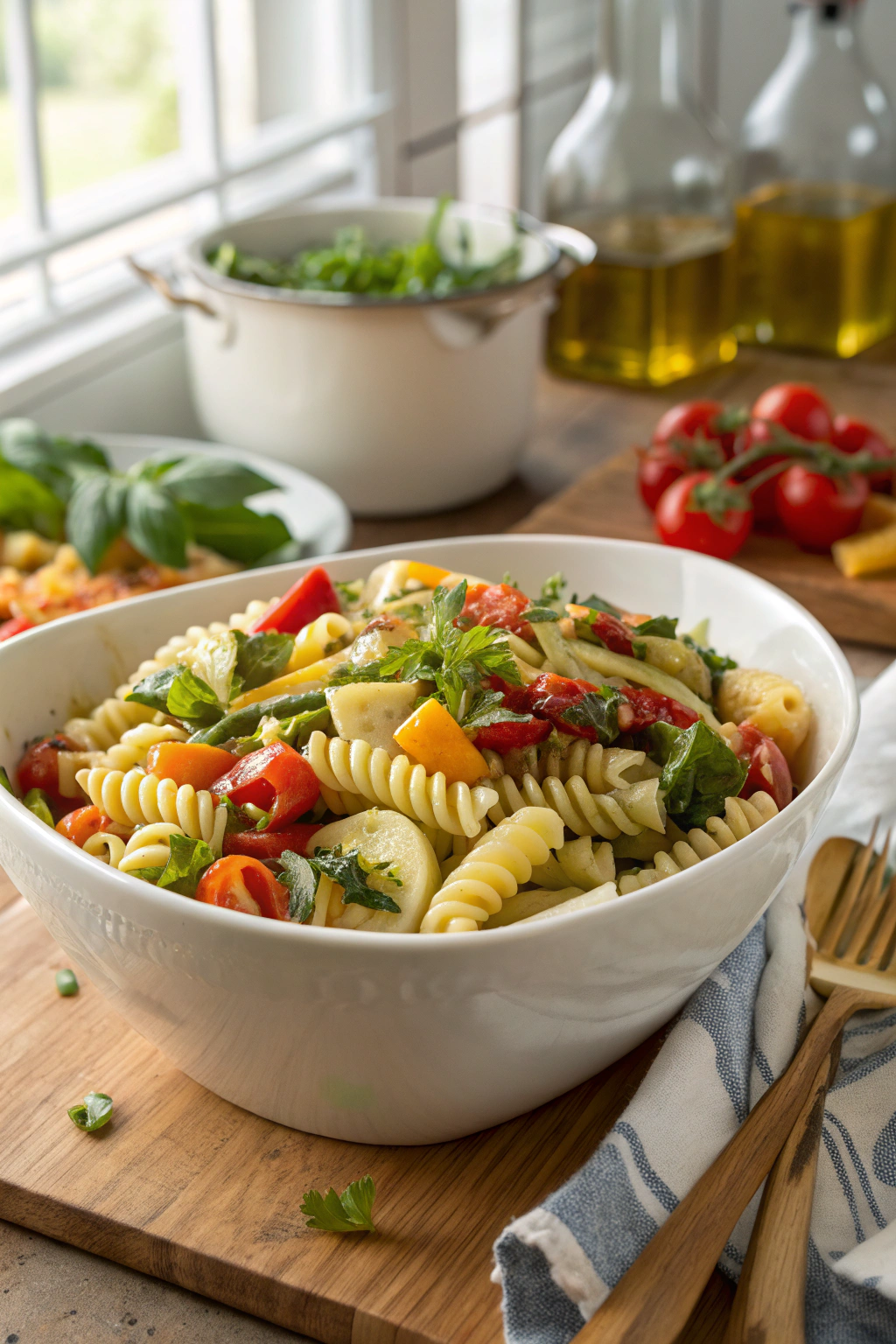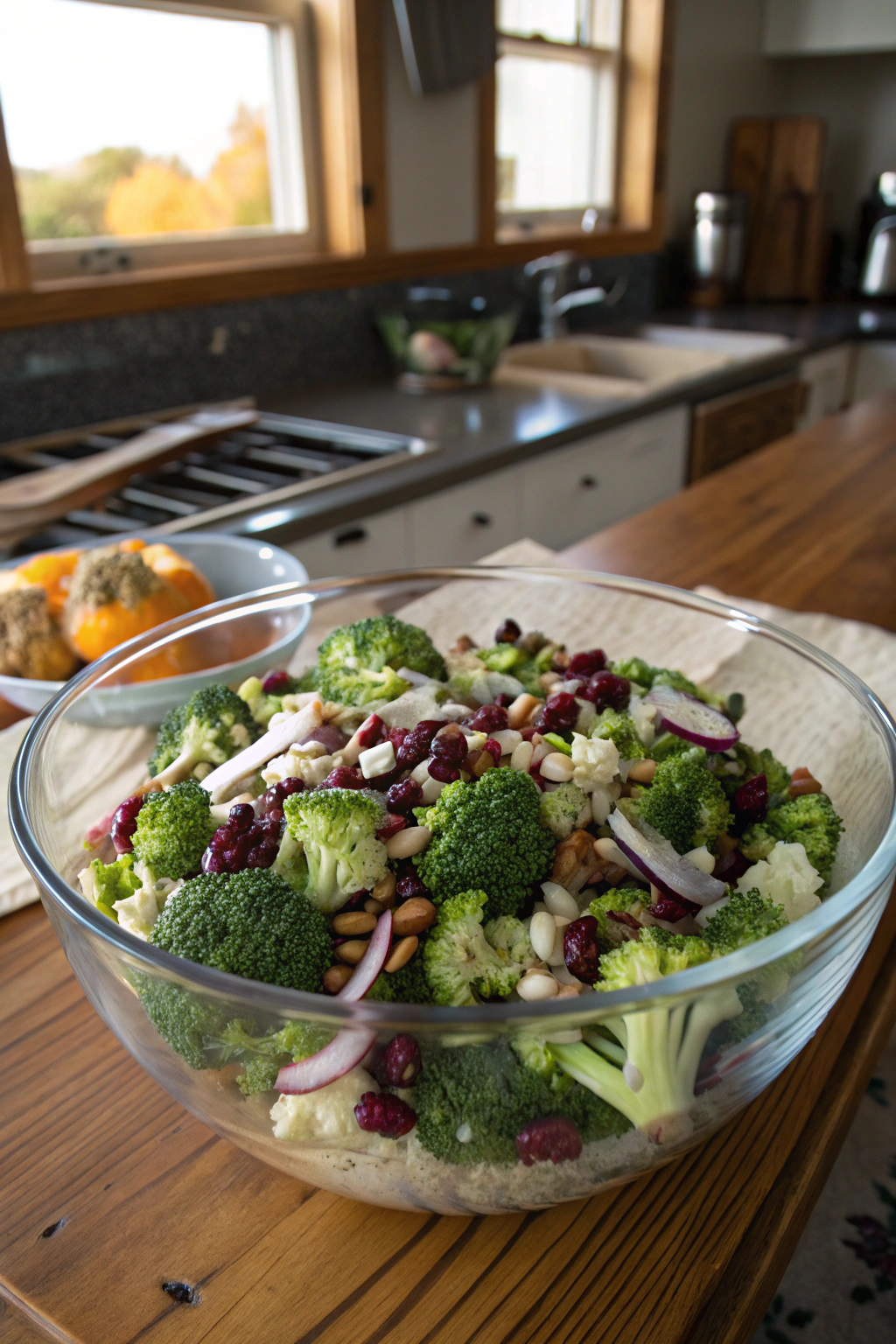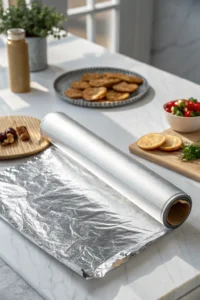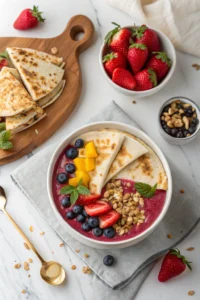Ready to transform your weekly meal prep? Batch cooking has become my weekend ritual, and I’m excited to share my tried-and-true tips with you. As a busy mom of three, I’ve learned that spending a few strategic hours in the kitchen can save countless weeknight dinner struggles.
Picture this: opening your fridge to find perfectly portioned, ready-to-heat meals that’ll make your family think you’ve been cooking all day. From freezer-friendly casseroles to mix-and-match meal components, these batch cooking tips will revolutionize your kitchen routine.
Whether you’re a meal prep newbie or looking to level up your game, I’ll walk you through everything – from smart shopping strategies to storage secrets. Let’s make those Sunday prep sessions work harder for you!
Why Batch Cooking Transforms Your Weekly Meal Plan
Understanding Batch Cooking Fundamentals
Batch cooking starts with smart kitchen organization and a clear game plan. Think of it as your personal restaurant prep line – everything needs its place. Start by clearing your counters and gathering essential tools: sharp knives, multiple cutting boards, and plenty of mixing bowls. You’ll want to group similar tasks together, just like professional chefs do. Chop all your vegetables at once, cook grains in big batches, and roast multiple sheet pans of proteins simultaneously.
I’ve found that working in “zones” makes a huge difference. Create a veggie prep station, a cooking station by the stove, and a packaging area for finished dishes. Keep cleaning supplies handy – you’ll be amazed how much smoother things go when you clean as you cook. Remember to label everything with dates and contents. Trust me, after a few weeks in the freezer, that mystery container might not be what you think it is!
Historical Development of Batch Cooking
Batch cooking actually traces its roots back to ancient civilizations. Early farmers would preserve their harvest through various methods like drying, smoking, and fermenting – the original batch cooking tips! In medieval times, large manor houses would dedicate entire days to baking bread or preparing preserved meats. Fast forward to the 1950s, when the rise of home freezers revolutionized how families approached meal preparation. Suddenly, cooking multiple portions became incredibly practical.
During the 1980s, working parents popularized “once-a-month cooking” as a time-saving strategy. I remember my grandmother spending every Sunday afternoon preparing casseroles for the week ahead. She’d always say, “A full freezer is like money in the bank!” Today’s batch cooking movement combines these traditional preservation methods with modern efficiency techniques. The practice has evolved from simple necessity to a smart lifestyle choice that saves both time and money.
Cost and Time Benefits Analysis
Smart batch cooking tips can transform your budget and schedule. A typical family of four saves between $200-300 monthly by planning and cooking in bulk. I’ve tracked my own savings, and batch cooking slashed my grocery bills by 40% last summer! Beyond money, you’ll save precious hours – most families gain back 5-7 hours weekly. Instead of daily cooking sessions, you’ll spend one focused afternoon creating multiple meals.
Picture this: while your chili simmers, you’re roasting vegetables and prepping chicken simultaneously. My favorite Sunday routine involves cooking three main dishes while catching up on podcasts. The initial time investment might seem daunting, but consider this – would you rather spend 3-4 hours cooking on Sunday or rush through dinner prep every weeknight? Plus, you’ll reduce food waste significantly since you’re planning portions carefully and using ingredients efficiently.
Complete Step-by-Step Batch Cooking System
Kitchen Setup and Equipment Organization
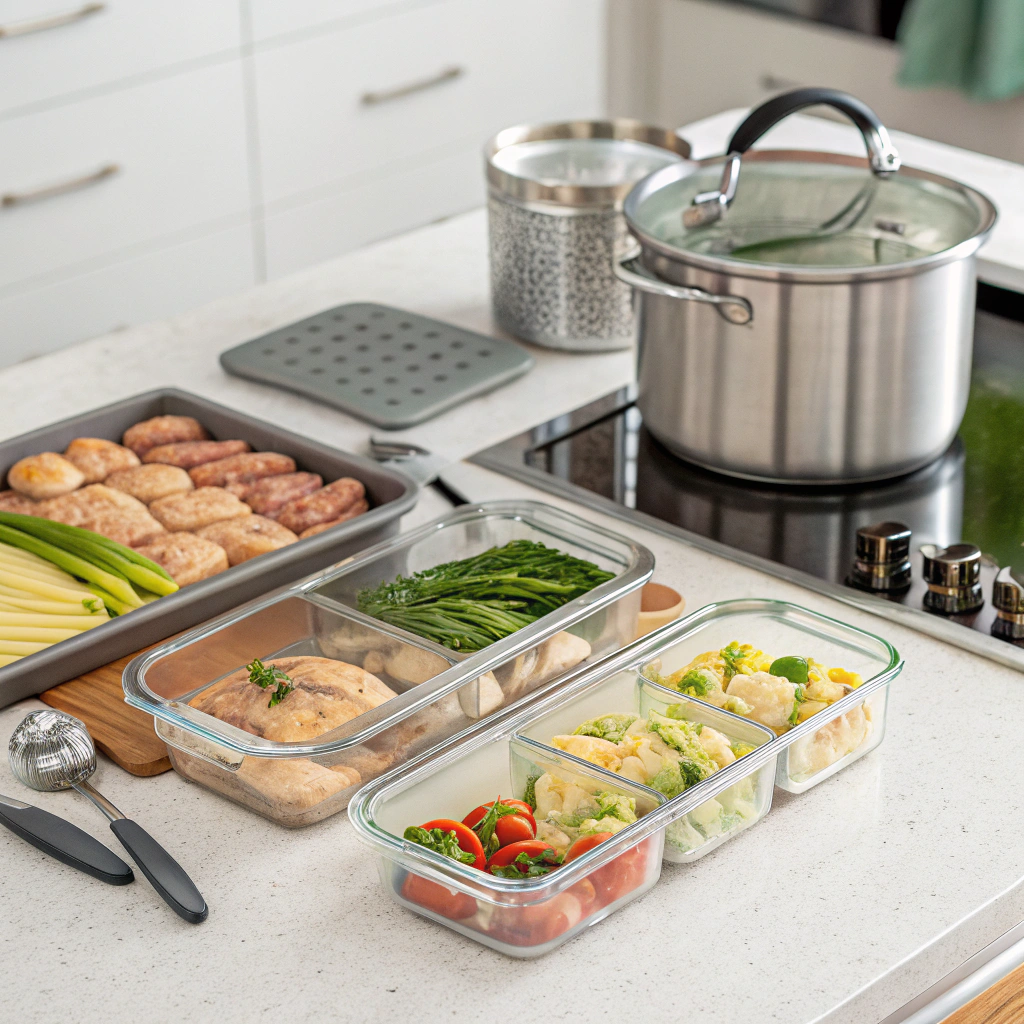
Ready to master batch cooking? Start by transforming your kitchen into an efficient cooking command center. Clear your counters completely and create dedicated zones – one for chopping, another for cooking, and a staging area for cooling dishes. Pull out those oversized pots and pans gathering dust – your 8-quart stockpot and multiple sheet pans will become your best friends. I swear by using clear glass containers in various sizes for organized ingredient prep.
Position small appliances strategically – your food processor for quick veggie prep and stand mixer for simultaneous marinades. For easy access, arrange measuring tools, mixing bowls, and cooking utensils within arm’s reach. Don’t forget to clear ample fridge space for your prepped ingredients and finished dishes. Having the right setup makes batch cooking feel less like a marathon and more like a well-choreographed dance.
Smart Meal Component Planning
Transform your batch cooking game by thinking in versatile components rather than complete meals. Start with protein powerhouses – roast a whole chicken while simultaneously baking salmon fillets. While those cook, steam rice and quinoa in separate pots to create adaptable grain bases. Prep raw ingredients in parallel: chop sturdy vegetables like carrots and celery for quick assembly, spiralize zucchini for fresh “noodle” options, and wash leafy greens for instant salads.
Create multi-purpose sauces and dressings that work across different dishes – think lemon herb vinaigrette that doubles as a marinade. The key is choosing ingredients that can mix and match throughout the week. This modular approach lets you whip up fresh combinations daily instead of eating the same pre-made meals. Plus, having prepped components ready means you can still enjoy the satisfaction of “cooking” while keeping prep time minimal.
Smart Kitchen Organization for Batch Success
Transform your batch cooking efficiency with strategic kitchen zones. Designate specific counter areas for different prep tasks – create a chopping station with cutting boards and knives, a mixing zone with bowls and measuring tools, and an assembly area for combining ingredients. Use clear containers to store prepped components, labeling everything with contents and dates. Stack similar items together vertically to maximize fridge space.
Keep frequently used tools within arm’s reach and arrange ingredients by recipe to minimize back-and-forth movement. Consider investing in multiple sets of essential tools like measuring cups and mixing bowls to avoid constant washing between tasks. A well-organized workspace dramatically reduces prep time and mental load, letting you focus on the actual cooking. Think like a restaurant kitchen – everything should have its place and flow logically from one station to the next.
Professional Batch Cooking Secrets Revealed
Temperature Control and Food Safety
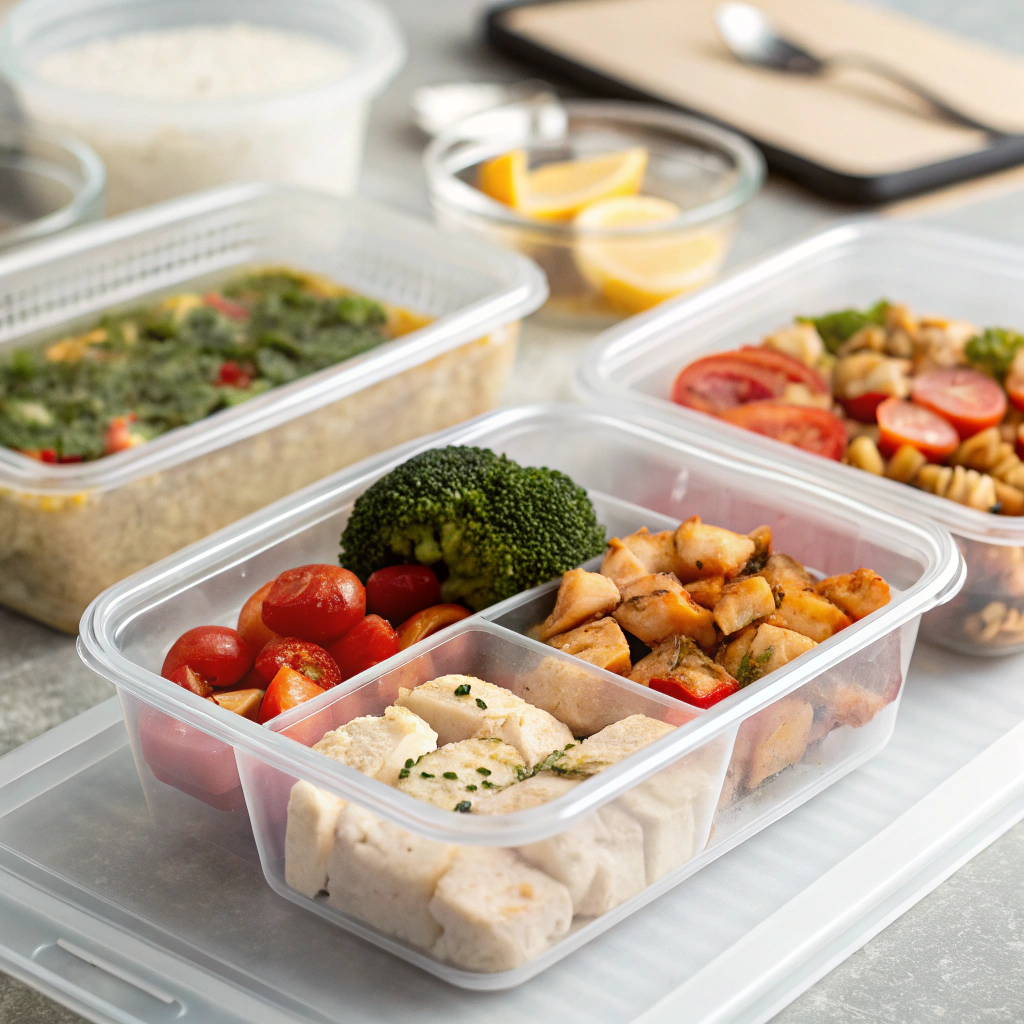
Mastering temperature zones is crucial for successful batch cooking. Start by investing in an accurate digital thermometer to monitor food temperatures throughout the cooking and cooling process. Cool hot foods quickly by dividing large portions into smaller containers – this prevents the dangerous temperature danger zone between 40-140°F where bacteria thrive. Use shallow containers no more than 2 inches deep for rapid cooling and refrigerate within 2 hours of cooking.
When reheating, bring foods to 165°F throughout before serving. For freezing, package items in portion-sized containers, removing as much air as possible to prevent freezer burn. Label everything with contents, date, and reheating instructions. Consider smart food storage solutions that stack efficiently while maintaining proper airflow in your fridge or freezer.
Meal Planning for Success
Successful batch cooking starts with smart meal planning. Create a detailed shopping list organized by grocery store sections to maximize efficiency. Choose recipes that share common ingredients to minimize waste and prep time. Plan meals that freeze well and maintain texture when reheated, like casseroles, soups, and grain bowls. Consider your family’s schedule and portion needs when deciding quantities.
Use a mix of protein sources – some meals with meat, others vegetarian – for variety and cost savings. Keep a running inventory of your freezer contents and rotate stock regularly. Label everything clearly with contents, portions, and “best by” dates. Having an organized system prevents forgotten meals and reduces food waste. Schedule regular batch cooking sessions, typically every 2-3 weeks, based on your family’s eating patterns and freezer space.
Equipment and Storage Solutions
Smart equipment organization is essential for efficient batch cooking sessions. Invest in quality containers with airtight seals and clear labeling systems. Stack similar-sized containers to maximize freezer space. Use heavy-duty freezer bags for soups and sauces, removing air before sealing to prevent freezer burn. Consider dedicated meal prep containers with portion control compartments. Stock up on disposable aluminum pans for casseroles – they’re perfect for gifting meals too.
A vacuum sealer is worth the investment for extending frozen food life. Keep a variety of container sizes on hand, from individual portions to family-sized. Use masking tape and permanent markers for clear dating. Store containers with similar items together in designated freezer zones. Consider a second freezer if you’re batch cooking regularly. Having the right storage solutions makes the whole process smoother and more organized.
Solving Common Batch Cooking Challenges
Preventing Freezer Burn Issues
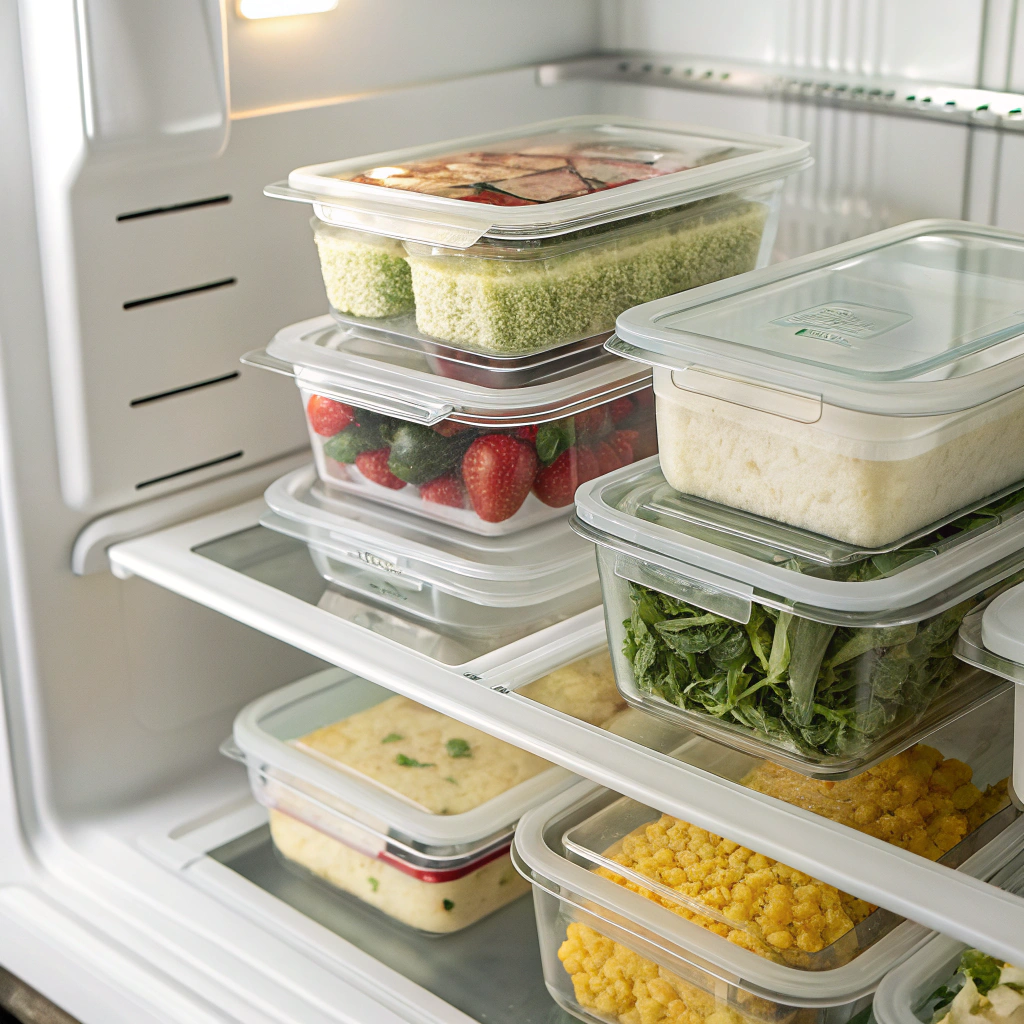
Freezer burn can quickly ruin your batch cooking efforts, but smart preparation makes all the difference. Start by cooling foods completely before freezing – rushing hot food into the freezer creates ice crystals that damage texture. Double-wrap everything, using plastic wrap first, then foil or freezer bags. Press out every bit of air – those trapped air pockets are freezer burn’s best friend. For soups and sauces, leave a half-inch headspace in containers to allow for expansion.
Consider portioning foods in serving sizes your family typically uses. Label everything with contents and date using painter’s tape and permanent marker. Rotate your frozen meals regularly, following the “first in, first out” rule. If you spot any freezer burn starting, use those items first in recipes where texture matters less, like casseroles or soups. Remember that proper temperature control is crucial – keep your freezer at 0°F (-18°C) or below.
Time-Saving Equipment for Batch Cooking Success
Investing in the right equipment transforms batch cooking from overwhelming to effortless. A large stock pot is essential – go for at least 8 quarts to handle big batches of soups and stews. Quality food storage containers are non-negotiable; opt for clear, stackable ones that go from freezer to microwave. A food processor speeds up prep work dramatically, while a vacuum sealer helps prevent freezer burn. Don’t forget extra mixing bowls and measuring cups – you’ll need them for simultaneous prep.
A kitchen scale ensures accurate portioning when dividing meals. Consider a second cutting board to keep workflows smooth. Label makers are game-changers for organizing your frozen meals. Most importantly, get an extra-large cooling rack – it’s crucial for bringing foods to room temperature quickly before freezing. These tools might seem like an investment, but they’ll save countless hours in the long run.
Smart Menu Planning for Batch Cooking Success
Planning your batch cooking menu strategically saves both time and money. Start by choosing recipes that share common ingredients – this reduces waste and prep time. Think about versatile proteins like chicken or ground beef that can transform into multiple dishes. Consider recipes that freeze well, like soups, stews, and casseroles. Plan around seasonal produce to maximize freshness and minimize costs. Don’t forget to account for your family’s schedule – busier weeks need more make-ahead meals.
Group similar cooking methods together to streamline your kitchen workflow. For example, roast all your vegetables at once or use the slow cooker for multiple dishes. Keep a running list of family favorites that work well for batch cooking. Balance your menu between complete meals and versatile components like sauces, cooked grains, or prepped vegetables. This flexibility lets you mix and match throughout the week while maintaining variety in your meals.
Creative Batch Cooking Menu Ideas
Family-Friendly Meal Combinations
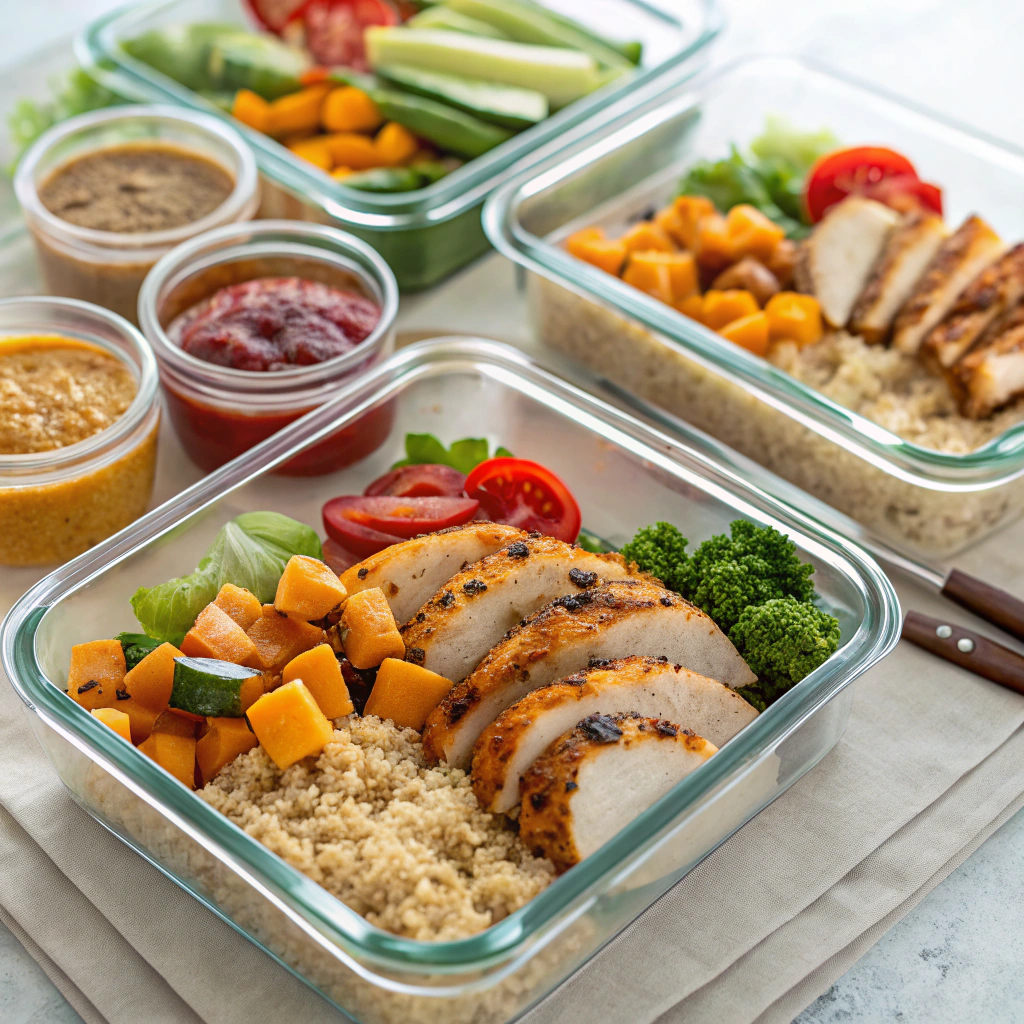
Creating versatile meal combinations is key to successful batch cooking. Start with a base protein like roasted chicken breasts that can transform into multiple dishes throughout the week. Cook a large batch of quinoa or brown rice as your grain foundation – these can support both warm dinners and cold lunch bowls. Roast several sheet pans of seasonal vegetables simultaneously, varying the seasonings to prevent flavor fatigue. Consider preparing basic sauces that can dress up different meals: a simple tomato sauce works for pasta, pizza bases, or as a braising liquid.
Make double batches of kid-approved favorites like turkey meatballs, which can be served traditionally with pasta or reimagined in sandwiches and grain bowls. Keep portions manageable by dividing completed dishes into family-sized servings before freezing. Remember to label everything clearly with contents and dates.
Smart Storage Solutions for Batch Cooking
Proper storage is crucial for batch cooking success. Invest in high-quality, airtight containers in various sizes – glass works best for hot foods and avoiding stains. Label everything with contents and dates using freezer-safe tape or washable markers. Create a dedicated freezer section for batch-cooked meals and maintain a first-in-first-out rotation system. When storing soups or sauces, leave headspace for expansion during freezing. Cool foods completely before storing to prevent condensation and ice crystals.
Consider portioning meals into single or family-sized servings before freezing – this makes thawing more manageable. Use heavy-duty freezer bags for items like marinated meats or cookie dough, removing as much air as possible before sealing. Keep a running inventory list on your phone or freezer door to track what needs to be used first. Remember that most cooked meals stay fresh for 3-4 months when properly frozen.
Time-Saving Batch Cooking Strategies
Maximize your batch cooking efficiency with smart prep strategies. Start by choosing recipes that share common ingredients and cooking methods – this reduces both prep time and dishes. Plan a “power hour” where you tackle all the chopping, measuring, and organizing ingredients for multiple recipes at once. Use sheet pan combos for roasting different vegetables or proteins simultaneously at the same temperature. Keep a running list of recipes that freeze well and batch cook those specifically.
Consider investing in an extra slow cooker or Instant Pot to prepare multiple dishes simultaneously. When cooking grains or proteins, make double batches and repurpose them throughout the week. Break down large tasks into manageable 15-minute segments spread across your cooking session. Always keep basic prepped ingredients like diced onions, minced garlic, and chopped herbs ready to go. Remember to clean as you cook to maintain an organized workspace and prevent overwhelm.
Start Your Batch Cooking Journey Today
Ready to transform your weekly cooking routine? Join our community of batch cooking enthusiasts! Download our free meal planning templates, connect with fellow home cooks, and share your success stories. Subscribe to our newsletter for weekly batch cooking inspiration, seasonal recipe collections, and exclusive time-saving tips. Your journey to stress-free meal prep starts here!
